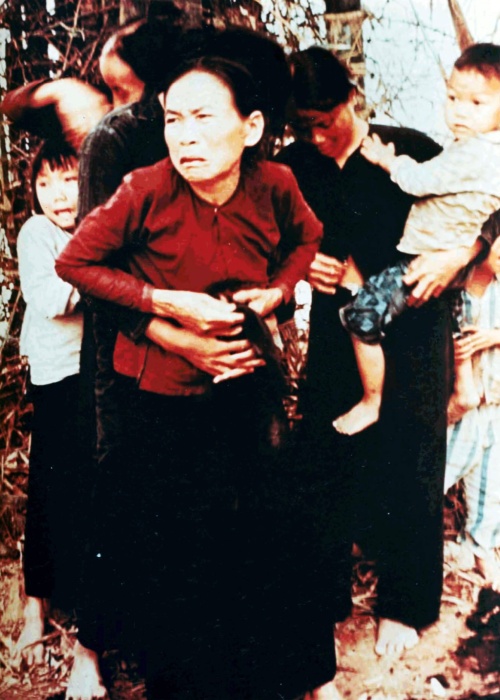It’s Been 46 Years, And Things Will Never Be The Same.
The Vietnam War is, and was a highly controversial war because for the first time United States citizens were exposed to real images that of what it actually looked like to kill someone in war – and some of those images were of women, children, and the elderly. 46 years ago this week there was in extraordinary event by civilian standards, that would change the world and how wars would be faught from thence forth… After Americans, and citizens of the world saw these images the public opinion of the war shifted enormously, and the people like George Romney who had to disappear for changing their minds about the war would be somewhat vindicated, but their lives and careers would never be the same. Here is a video of that life/career changing decision to speak against what he’d seen in the war:
*This post is not meant to say that we were then, or are the “bad guys”, that is just not the case. However, it is meant to serve as a reminder, or informer that it’s not so simple. When we talk about going to war we need to look it in the face. I believe in our service members, and I believe in so much that they do. That doesn’t mean however that we should let ourselves forget our place in this world, and the realities of war.
WARNING: VERY GRAPHIC
The Mỹ Lai Massacre (Vietnamese: thảm sát Mỹ Lai [tʰɐ̃ːm ʂɐ̌ːt mǐˀ lɐːj], [mǐˀlɐːj] /ˌmiːˈlaɪ/, /ˌmiːˈleɪ/, or /ˌmaɪˈlaɪ/)[1] was the Vietnam War mass murder of between 347 and 504 unarmed civilians in South Vietnam on March 16, 1968. It was committed by the U.S. Army soldiers from the Company C of the 1st Battalion, 20th Infantry Regiment, 11th Brigade of the 23rd (Americal) Infantry Division. Victims included women, men, children, and infants. Some of the women were gang-raped and their bodies mutilated.[2][3] Twenty six soldiers were charged with criminal offenses, but only Second Lieutenant William Calley Jr., a platoon leader in C Company, was convicted. Found guilty of killing 22 villagers, he was originally given a life sentence, but served only three and a half years under house arrest.
The massacre, which was later called “the most shocking episode of the Vietnam War”,[4] took place in two hamlets of Son My village in Sơn Tịnh District of Quảng Ngãi Province on the South Central Coast of the South China Sea, 100 miles south of Da Nang and several miles north of Quảng Ngãi city east of Highway 1.[5] These hamlets were marked on the U.S. Army topographic maps as My Lai and My Khe.[6] The U.S. military codeword for the alleged Viet Cong stronghold in that area was Pinkville,[7] and the carnage became known as the Pinkville Massacre first.[8][9] Next, when the U.S. Army started its investigation, the media changed it to the Massacre at Songmy.[10] Currently, the event is referred to as the My Lai Massacre in America and called the Son My Massacre in Vietnam.
The incident prompted global outrage when it became public knowledge in November 1969. The My Lai massacre increased to some extent[11] domestic opposition to the U.S. involvement in the Vietnam War when the scope of killing and cover-up attempts were exposed. Initially, three U.S. servicemen who had tried to halt the massacre and rescue the hiding civilians were shunned, and even denounced as traitors by several U.S. Congressmen, including Mendel Rivers, Chairman of the House Armed Services Committee. Only thirty years later they were recognized and decorated, one posthumously, by the U.S. Army for shielding noncombatants from harm in a war zone.[12]

